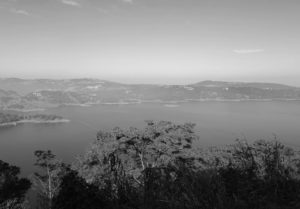Nurul Islam Laskar
 Mainland India was not touched by the earthquake of 1950. Something else was happening there. The Indian Republic is governed in terms of the Constitution of India which was adopted by the Constituent Assembly on November 26, 1949. It came into force on January 24, 1950.
Mainland India was not touched by the earthquake of 1950. Something else was happening there. The Indian Republic is governed in terms of the Constitution of India which was adopted by the Constituent Assembly on November 26, 1949. It came into force on January 24, 1950.
The original draft of the Constitution was submitted during November of 1947 and was re-worked until it was finally approved by the Constituent Assembly in November of 1949. The new Constitution declared that the country of India would be a sovereign socialist and democratic republic that would be organised as a federal union of territories and states, ruled under a parliamentary system. As the Constitution of India took effect, the newly self-governing country became the most populous democracy in the world.
Elsewhere in the world, in the aftermath of World War II’s significant instability came the 1950s, suburbia, and the dream of a “picture-perfect” family. The 1950s were boomer years. The economy boomed, and everywhere individuals were feeling the need for family and security after the hard days of the War. So, in 1950s family life, there was also a marriage boom, birth rate boom, and housing boom.
Even though World War II had ended in 1945, wars over limited regions continued to surface from time to time. The Korean War began in 1950 when North Korea invaded South Korea in June. The country had previously been divided after the end of World War II with the North becoming Communist and the South remaining Capitalist.
After the initial division, each side had indicated that they wanted to unify the country under their preferred ideology but only small attacks had been made. A full fledged civil war began after the North launched a total invasion and eventually captured the South’s capital, Seoul. Not long after the war began, it became an international conflict when the United States and United Nations sent troops to help the South and China began helping the North. The war ended in 1953 when the two countries settled on maintaining the original division.
Meanwhile, my family lived in a rented house in the Laitumkhrah area of Shillong when I was born. I don’t have any memories of that house. But all that I picture of that house and how life was at that time, is reconstructed from the tales I’d hear from my mother from time to time. My mother, Rahila Khatoon, was born in 1928 in Bourghat Village of Hailakandi Sub Division of the then Cachar District of Assam. Married in her teens, she moved over to Shillong, the capital of Assam during the British regime. She told us that her father was a village school teacher with a monthly salary of Rs 10. With that much money, he would meet all household expenses and yet was able to save some for a rainy day too. She lived in Shillong ever since then, until she breathed her last on May 5, 2020.
Shillong was the capital for the composite state of Assam during the British regime and later till a separate state of Meghalaya was formed in 1972. David Scott, a British civil servant of the East India Company, was the Agent of the Governor-General for the North East Frontier of India. The British authorities felt the need for a road to connect Sylhet and Assam during the First Anglo-Burmese War (1824-1826). This road would cut across the peaks and lows of the Khasi and Jaintia Hills. The Syiems, Khasi Chieftains, and their subjects were not in favour but Scott was shrewd enough to overcome the opposition and win them over. Overwhelmed by the cool climate of Khasi Hills, the British administration negotiated with the Syiem of Sohra (now Cherrapunjee) in 1829 for a sanatorium for the white people. Thus began the consolidation of British interests in the Khasi Jaintia Hills.
The author was a columnist in the 80s & 90s and now a contributor at The Shillong Times



